With the explosion of apps like TikTok and Instagram; photography has become a huge part of traveling. This has made having a great camera more important than ever.
If you’re someone who likes to take exceptional photographs, then your smartphone camera won’t cut it. So how do you know the best mirrorless camera to bring with you on your trip? I mean, you need one that’s lightweight and does your captures your travels in high quality.
Bigger cameras like DSLRs can give you longer battery life but aren’t easy to carry or travel with. So here’s my list of the top mirrorless cameras for travel photography. They’re all tote-friendly and still produce the kind of pics that make people’s eyes pop and get you gobs of likes and shares.
Best Mirrorless Camera for Travel:
- Features to Look For When Buying a Mirrorless Camera for Travel
- 1. Sony a7C – Best Mirrorless Camera for Travel
- 2. Canon EOS R5 – Best Mirrorless for Canon Users
- 3. Sony a7 III
- 4. Canon EOS R8
- 5. Canon EOS R50
- 6. Nikon Z8
- 7. Canon EOS R
- 8. Canon EOS R3
- 9. Canon EOS RP
- 10. Canon EOS R7
- 11. Canon M50 Mark II
- 12. Nikon Z6 Mark II
- 13. Sony a6500
- 14. Fujifilm X-T4
- 15. Fujifilm X100V
- 16. Panasonic Lumix DC-G9
- 17. Olympus OM-D E-M10 Mark III
- 18. Olympus OM-D E-M1 Mark III
- 19. Panasonic Lumix GH6 – Great Mirrorless for Vloggers
Features to Look For When Buying a Mirrorless Camera for Travel
Before you jump into camera brands and models, you should know and understand the features to look for in a mirrorless camera. There a few factors to consider especially if you’re coming from a phone or point-and-shoot camera.
Here are some of the important factors when buying a camera:
- Sensor Size: Full frame, cropped, micro 4/3, all of these will affect how your camera takes photos and handles lenses. Full frame sensors offer the full sensor to your lens, meaning if a lens is 16mm it’ll be 16mm. While on a 1.7x cropped sensor that 16mm lens will act like a 27mm lens. Micro 4/3 lenses will have a 2x crop so a 16mm lens will act like a 32mm lens. Even though there are plenty of lenses designed for cropped sensors the crop factor makes it harder to find wide-angle lenses for your body so it is optimal to get a full-frame camera.
- Megapixels: Depending on how you intend to use your photos, megapixels can matter a lot. If you’re just uploading to Instagram or other social media, a high megapixel count probably won’t matter much. But if you plan on printing your photos in larger formats, you need a camera with a high megapixel count.
- Battery Life: Since you’ll be on the move, battery life will be extremely important especially if you plan on using your camera for travel videos. Luckily many mirrorless cameras can be charged through their USB port, which means you can leave your charger at home. This makes it easy to charge them from a battery pack on the go as well.
- Built-in WiFi: Once you start taking photos, you’ll want to edit and post your photos right away. This makes having a camera with WiFi connectivity is essential for travel. You can easily edit them in any editing app, but I recommend Lightroom CC for editing RAW images.
- Body Size: Having a small camera is one of the huge perks of buying a mirrorless camera. A lightweight camera is a huge plus when traveling. While a smaller camera is easier for travel it may lack essential dials you could be used to on larger DSLR cameras. That being said, you’ll want one that’s easy to carry, especially for longer trips and hikes.
- Video Features: Many photographers make YouTube and TikTok videos of their travels. If you’re interested in making videos, this is an important thing to consider before buying a mirrorless camera. Be sure you understand the camera’s video capabilities.
- Weather Sealing: Rain, sleet, snow, all of these can be disastrous on a regular camera body. Many high-end mirrorless cameras and lenses are weather-sealed so things like rain or snow won’t damage them.
- Lens Selection: Sony, Canon, Nikon, and Micro 4/3 cameras all offer a different selection of lenses. I recommend looking into lenses of each system before committing to a brand since lenses aren’t shared across brands.
- Image Stabilization: Most mirrorless cameras offer sensor image stabilization. Having a sensor and/or lens with stabilization will allow your camera to take in more light while you’re taking handheld shots. This can be extremely useful when you’re on the go since you’ll be able to take lower ISO photos with faster shutter speeds. Additionally, stabilization will improve your videos by making them less shaky.
No matter your budget I’ve broken down a large selection of the best mirrorless cameras for your travels. Let’s dive in and get you a new camera!
Best Mirrorless Cameras for Travel Photography in 2024:
1.Sony a7C – Best Mirrorless Camera for Travel

- What I like: Ultra small with a great sensor and flippy screen.
- What I dislike: Could be higher megapixels for stills.
Sony’s latest mirrorless camera is the Sony a7C which offers most of the same features of the Sony a7 III in a smaller more compact body. This makes it the perfect mirrorless camera for travel. With its compact size and incredible features the Sony a7c is a must have for travelers. Some highlights include a 24.2 megapixel sensor, incredible autofocus, and a compact form factor.
Sony achieves a smaller body size of the a7C by moving the EVF lower down to the side of the camera. Plus it has the huge benefit of having a fully articulating flip screen making it perfect for vlogging or selfies.
The Sony a7C is also a fantastic choice for video shooters. The a7C can shoot 8-bit 4K video at 30fps, plus 120fps at 1080p for those smooth slow motion shots.
More Sony a7C features:
- Full frame 24.2 megapixel sensor for incredible stills
- Fully articulated flip screen (perfect for selfies/vlogging)
- 693-Point Hybrid AF System
- 4K 30fp maximum video quality (with a crop)
- Eye auto focus
- World’s smallest and lightest1 full-frame camera
2. Canon EOS R5 – Best Mirrorless for Canon Users
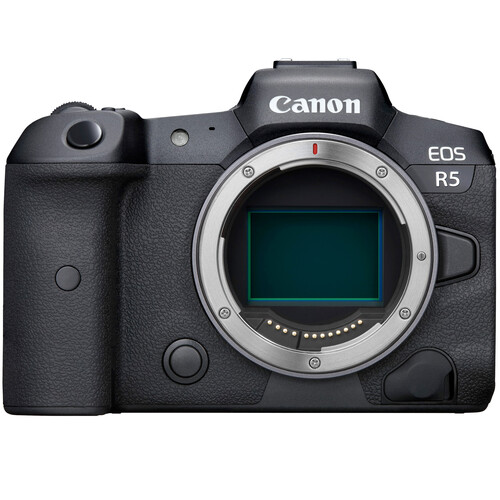
- What I like: Incredible image quality, amazing video features, IBIS, and a flippy screen!
- What I dislike: High price relative to the mirrorless market.
Canon’s flagship mirrorless camera has arrived in the from of the Canon EOS R5. With a massive 45-megapixel sensor, incredible dual pixel 2.0 autofocus, sensor stabilization, and 4K 120fps recording there will be nothing you can’t capture.
The dual pixel 2.0 autofocus even works for animals, best of all it works in all modes on the camera. This includes 8K, 4K 120fps, and of course shooting photos at 20fps.
The best thing about the Canon R5 is that it can use all of Canon’s EF lenses using an adapter or any of the new native RF lenses.
- High Image Quality: Canon EOS R5 8K digital camera features a stacked, back-side illuminated 45-megapixel full-frame CMOS sensor for phenomenal low-light performance, image clarity and level of detail
3. Sony a7 III
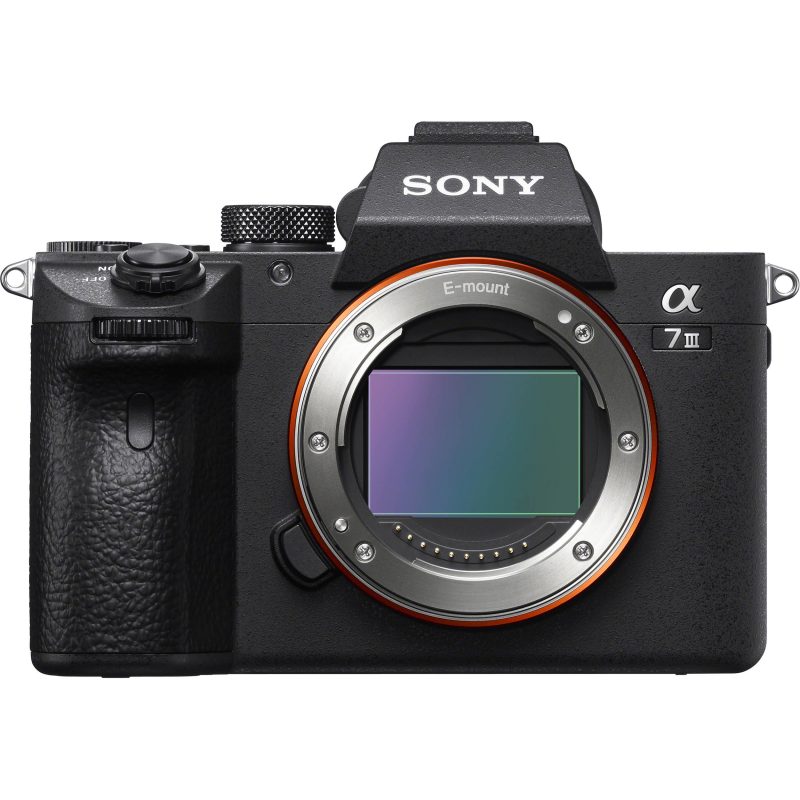
- What I like: Somewhat affordable way to get into full frame photography with a high quality sensor.
- What I dislike: Could be higher megapixels for stills.
Innovation and evolution are on display in The Sony a7 III. It’s the best mirrorless camera for travel. Compared to other lightweight cameras in its price range, it stands a few notches above. Its size, price, and features make it the smart and obvious choice.
It has been upgraded in almost every way from the Sony a7 II and boasts some seriously sweet features:
- Exceptional low light performance
- Sharp photo quality
- 24MP full-frame CMOS sensor
- Tilt screen
- Touchscreen (can’t be used for menus)
- Weather-sealed body
- 2.36M-dot OLED viewfinder, 0.78x magnification
The Sony a7 III has a quick and reliable autofocus system with 693 point phase detection, to keep pictures in focus. Pair that with a 10 frame per second burst mode, and you’ve got a portable camera perfect for capturing fast action scenes. You’ll also be impressed with its back-side illuminated 24-megapixel sensor that delivers incredible low light performance and is comparable to the A7RIII.
The a7 III is awesome for travel because it’s small and packs a huge punch. It brings you super crisp images in a super portable body that you can store in any bag.
Photographer
And with a 700 shot battery life (which is unheard of in any other mirrorless camera) longevity isn’t an issue. Plus, you can charge the battery internally using a 3.1 USB type C. With the USB C charging capability you can even power the camera from a power brick during time lapses or while in transit.
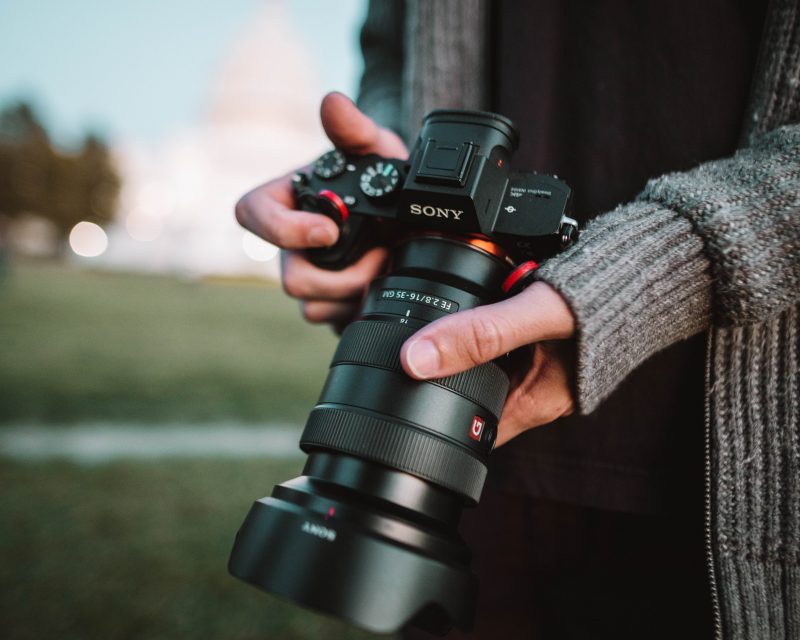
As far as audio recording, no worries. There’s a microphone jack to take in all the sounds with your favorite microphone. The only catch is that the a7 III lacks a flip screen, so you can’t see yourself while vlogging.
If you have a larger budget and want to take incredible high-resolution photos you should also consider the Sony a7R IV which offers an insane 61-megapixel sensor. In addition to an insane sensor, it offers a mode that allows you to pixel shift and take photos that are 240 megapixels.
For a more in-depth look at the a7 III, you can watch this video review by DPReview.
- Advanced 24.2MP BSI Full-frame Image Sensor w/ 1.8X readout speed Advanced 24.2MP Back-Illuminated 35mm Full-frame Image Sensor
4. Canon EOS R8
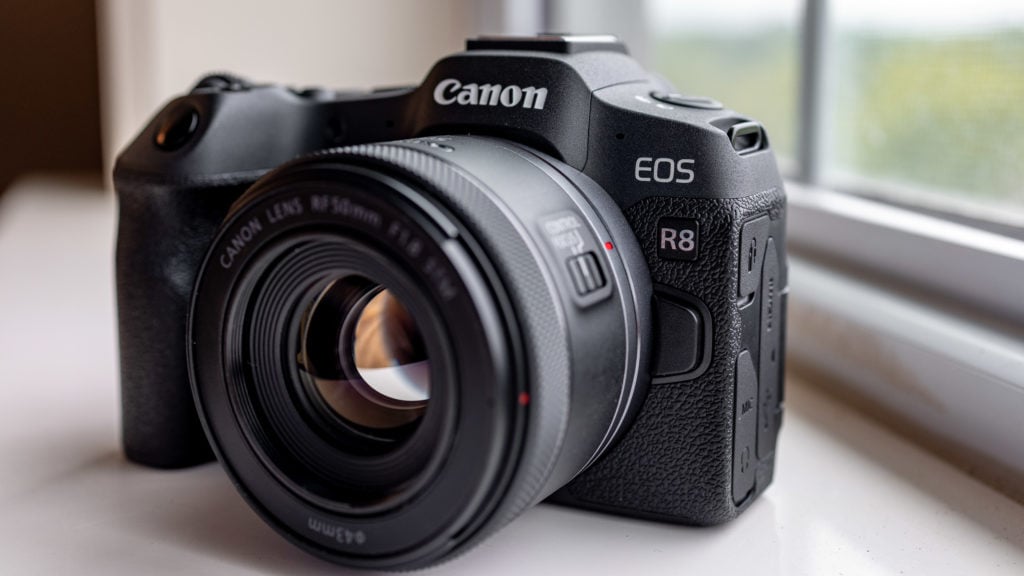
- What I like: Great performance for the price, CLOG3, stunning sensor and images.
- What I dislike: Uses the smaller Canon LP-E17 battery and lacks IBIS.
I’ve only spent a few weeks with the Canon EOS R8 and I can tell it’s going to be massively popular for travel photographers. This lightweight camera features a 24.2MP full-frame CMOS sensor and a DIGIC X processor for exceptional image quality. Its advanced autofocus system, Dual Pixel CMOS AF II, ensures sharp, focused shots in any setting.
For video creators, the R8 offers 4K60p 10-bit internal video, Canon Log 3 for greater dynamic range, and a Vertical Movie Mode. The 3.0″ flip-screen and electronic viewfinder make framing shots easy, while connectivity options like Wi-Fi and Bluetooth enable quick photo sharing.
The Canon R8 is a perfect blend of performance, versatility, and portability, making it a top choice for travel photography.
If you just picked up a Canon R8 I recommend reading my Canon EOS R8 setup guide.
- Step up to full-frame with Canon’s lightest full-frame RF Mount mirrorless camera featuring a 24.2 million pixel CMOS image sensor and DIGIC X Image Processor.
5. Canon EOS R50
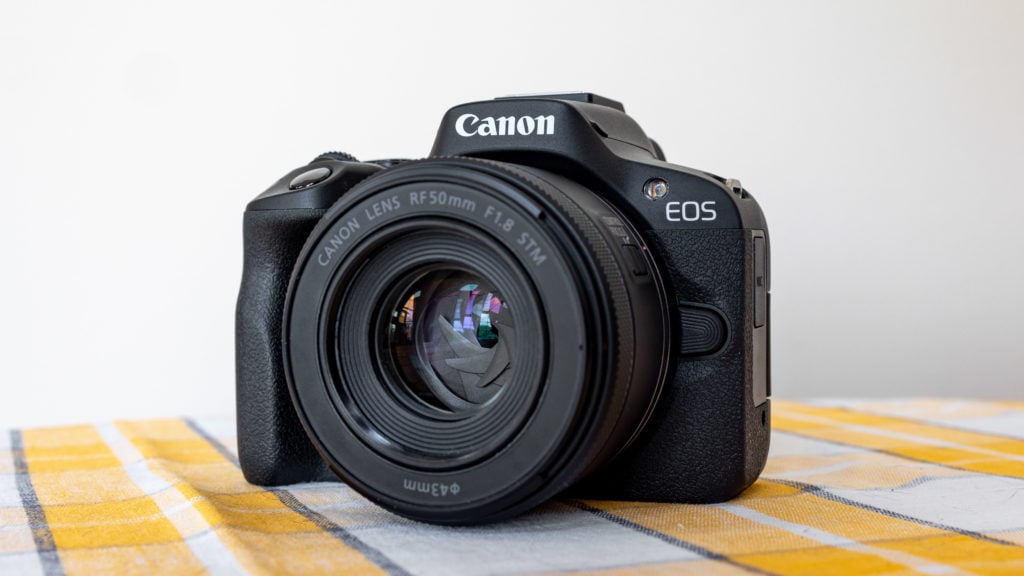
- What I like: Incredible price, extremely compact, great sensor and autofocus.
- What I dislike: Grip is designed for small hands, cropped sensor and limited RF-S lens section (granted it can use all RF lenses)
The Canon EOS R50 is an excellent choice for travel photography, thanks to its compact design and versatile features. Build as the successor to the Canon EOS M50 the Canon R5 is a great choice for beginners. The R50 features a 24.2MP APS-C CMOS Sensor and DIGIC X Image Processor; both work together to deliver stunning images and UHD 4K 30p video, ensuring that you capture all your adventures in high quality. The camera’s Dual Pixel CMOS AF II system with 651 points ensures fast and precise autofocus, while the 15 fps electronic shutter allows for capturing fast-moving subjects with ease.
Paired with the Kit RF-S 18-45mm f/4.5-6.3 IS STM lens, the R50 offers a wide range of focal lengths suitable for various travel photography scenarios. The 3.0″ flip touch screen and 2.36m-dot electronic viewfinder provide flexible composition options, and the built-in Movie for Close-Up Demos Mode and Vertical Movie Mode make it easy to document your experiences in creative ways. Overall, the Canon EOS R50 with the 18-45mm lens kit delivers a powerful and convenient solution for travelers seeking a reliable camera to preserve their memories.
- High Image Quality: Canon EOS R50 4K digital camera features a 24.2 Megapixel CMOS (APS-C) sensor and DIGIC X processor for stunning image clarity and level of detail
6. Nikon Z8
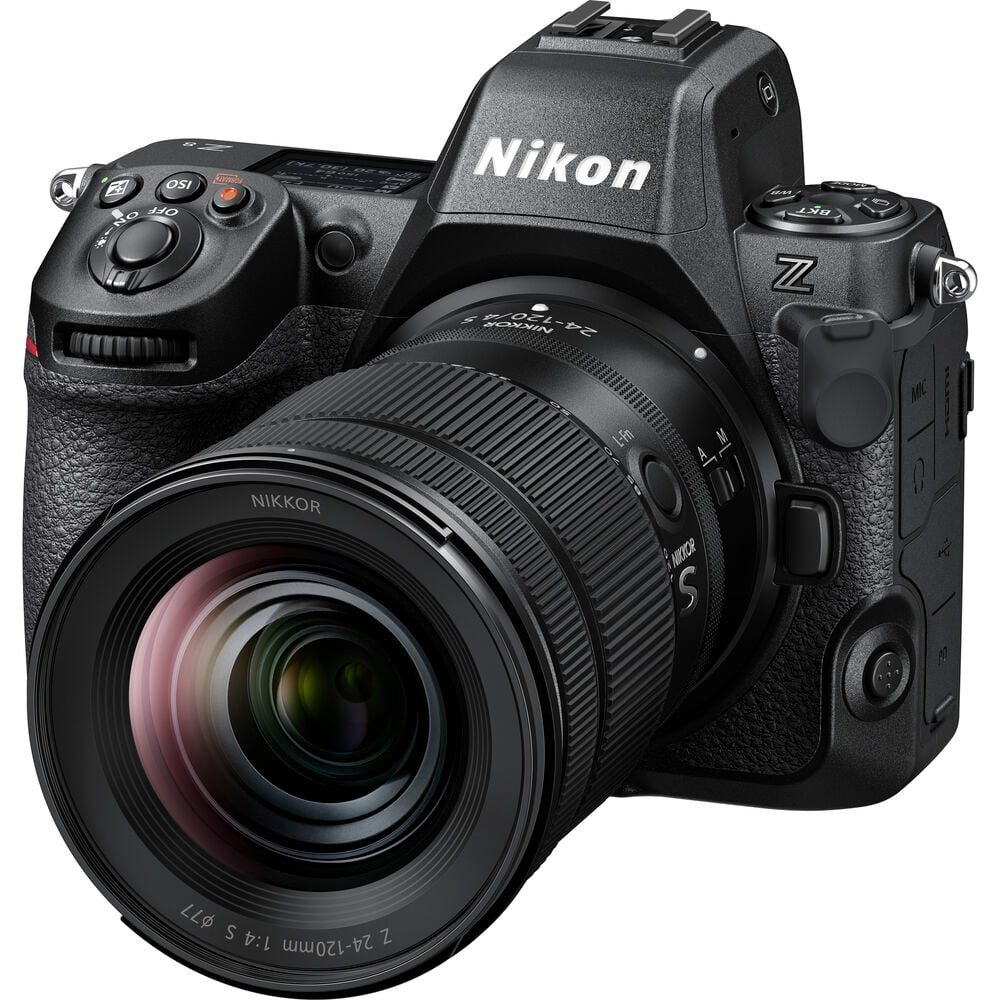
- What I like: Top tier camera with great photo and video quality.
- What I dislike: Expensive price and lacks mechanical shutter (can be a pro or con depending on what you’re looking for).
The Nikon Z8 Mirrorless Camera is a travel photographer’s dream. Compact and lightweight, this camera brings the power of Nikon’s flagship Z9 into a more portable package, perfect for on-the-go shooting. Its 45.7MP Stacked BSI CMOS Sensor, combined with the EXPEED 7 Image Processor, guarantees impressive clarity, minimal noise, and fast autofocus speeds.
This camera’s electronic shutter design eliminates mechanical wear or breakdown, ensuring you can capture fast-moving subjects without distortion. It’s also silent, an advantage in certain scenarios like wildlife photography.
The Z8’s video capabilities are robust, supporting internal 8K60 and 4K 120 recording. It’s also geared towards portraiture, with features like skin softening and optimized white balance for human subjects.
Its durable construction, eco-friendly carbon fiber and magnesium alloy body, dual memory card slots, and excellent weather sealing make it a reliable companion for travel. The real-live viewfinder and four-axis tilting LCD screen add to its practicality, while various connectivity options like HDMI, USB-C, and Wi-Fi accommodate different workflow needs. In short, the Nikon Z8 is a high-performance, versatile mirrorless camera that’s well-suited for both photography and videography while traveling.
7. Canon EOS R
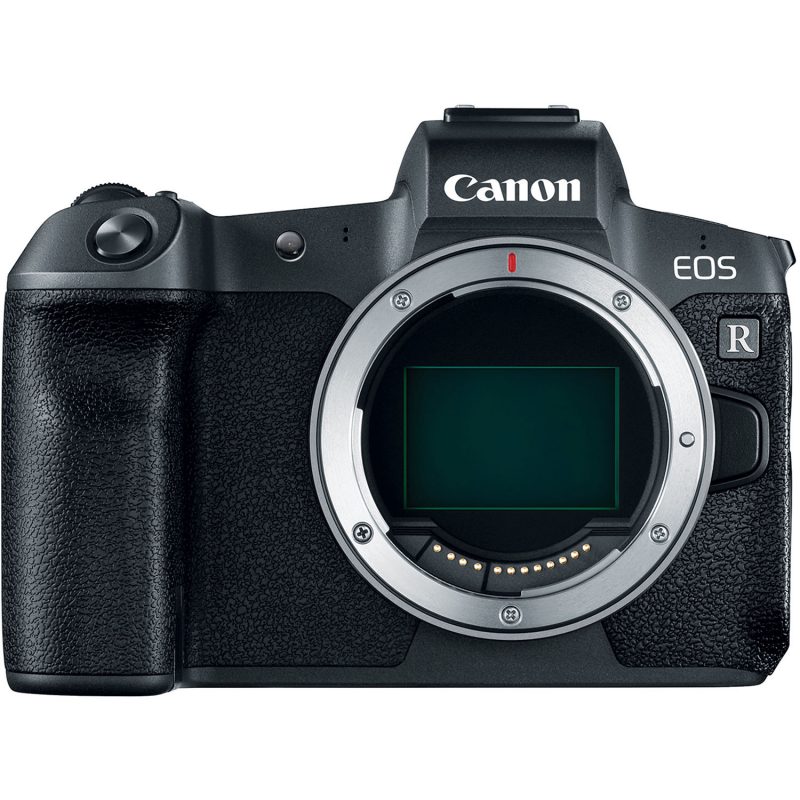
- What I like: For the price, incredible image and video quality for Canon shooters.
- What I dislike: No joystick and cropped 4K if you’re shooting video.
The EOS R is Canon’s first mirrorless camera, but it’s no surprise that it busted onto the scene with polarizing opinions. It’s the first mirrorless camera to use Canon’s new RF mount. Packing a 30.3-megapixel sensor with dual pixel autofocus, it’s a great choice for travel photography.
Its elegant, lightweight, and stacked with awesome features like:
- Fully articulated flip screen
- 3.69M dot OLED viewfinder
- Canon C-Log recording (10-bit 4:2:2 over HDMI or 8-bit 4:2:0 internal)
- 8 fps shooting with continuous AF
- Incredible touchscreen
- 4K 30fp maximum video quality (with a crop)
- Eye auto focus
And no worries, there’s an adapter that makes the Canon EF mount perfectly compatible. It easily fits onto the mirrorless body. So yes, you can use all of your old Canon lenses on the EOS R! This is a fantastic feature for those who are heavily invested in Canon EF lenses.
Another sweet feature is the “sensor protection” function. Basically, the shutter comes down when the camera is turned off. This makes it so less dust will get on your sensor while you’re changing lenses. It’s nothing fancy, yet a welcome feature seeing as how none of the other cameras have added it.
The battery life is pretty good as well. It uses an LP-E6N Li-ion battery that you can rely on to get you through the day. These are the same batteries in the 5D Mark IV and many other Canon cameras.
Some people aren’t crazy about this camera’s cropping in 4K video recording and lack of in-body image stabilization. But the Canon EOS R is still a stellar camera for travel pictures and videos. It has a flip screen for selfies and vlogging, plus a microphone port to pick up all the audio and ambiance of your trip. If you’re on the hunt for the perfect travel camera, you may have found your match.
Read my full Canon EOS R review it here. If you end up picking one up check out my list of the best Canon EOS R settings.
- FULL-FRAME CMOS SENSOR & DIGIC 8 30.3 MP IMAGE PROCESSOR: Ensures crisp photos and high-resolution videos; enables optimum performance, image processing, and video functionality
8. Canon EOS R3
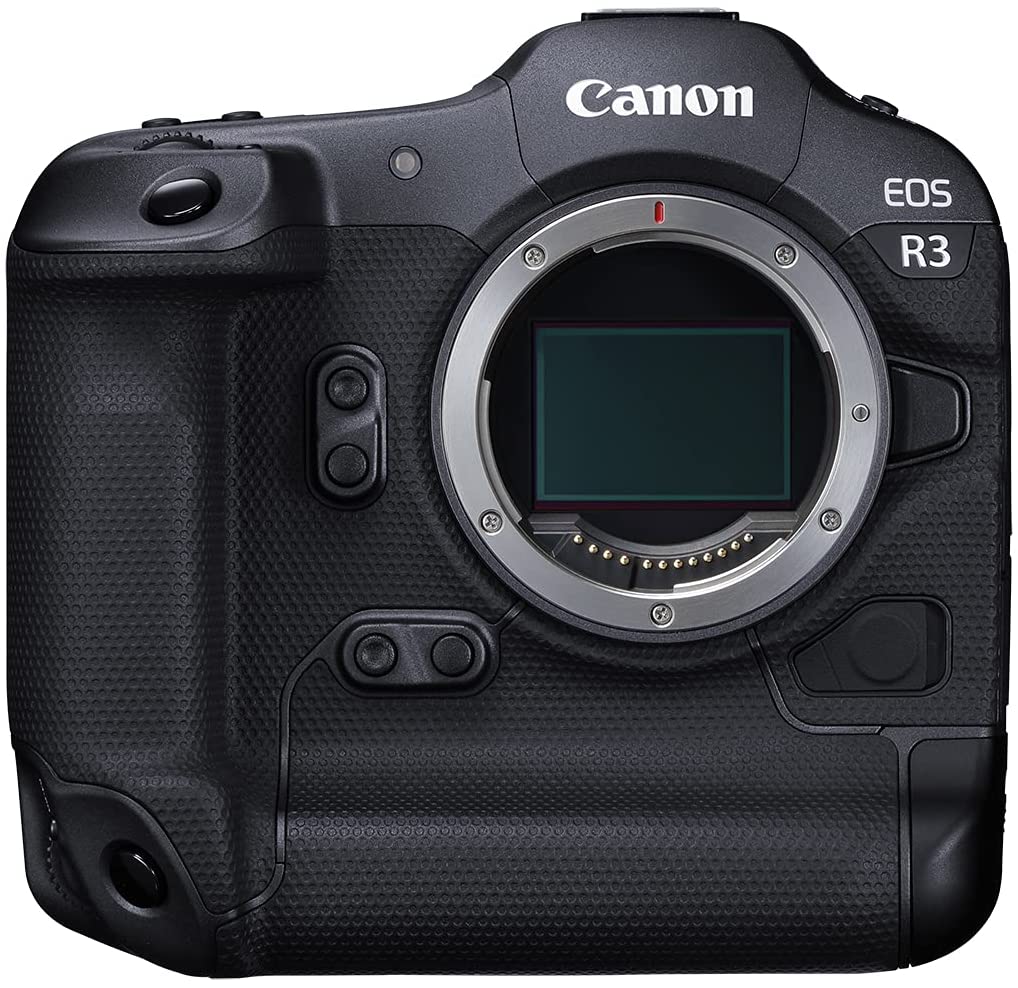
The Canon R3 is Canon’s flagship mirrorless camera that offers an incredibly sharp 24-megapixel sensor, Dual Pixel CMOS AF II, 30 fps electronic shutter shooting, and top notch video features. At its price the R3 would only be for professions or those who want the highest quality photos/videos.
This large mirrorless camera is designed for action photography:
- Fully articulated flip screen
- 5.76m-dot OLED viewfinder
- 6K60 Raw and 4K120 10-Bit internal video recording
- 30 fps electronic shutter
- Eye control auto focus
The Canon R3 features near unlimited recording as well making it one amazing video camera. Of course it features the Canon RF mount making it compatible with all RF lenses and EF lenses using an adapter.
One unique feature of the R3 is the ability to focus via your eye when looking through the viewfinder. If you’re shooting sports you can literally look at your subject through the viewfinder to set your focus point. Of course you can still use traditional focus modes that are incredibly fast.
- High Image Quality: Canon EOS R3 is small video camera that features a stacked, back-side illuminated 24.1-megapixel full-frame CMOS sensor for phenomenal low-light performance, image clarity and level of detail
9. Canon EOS RP
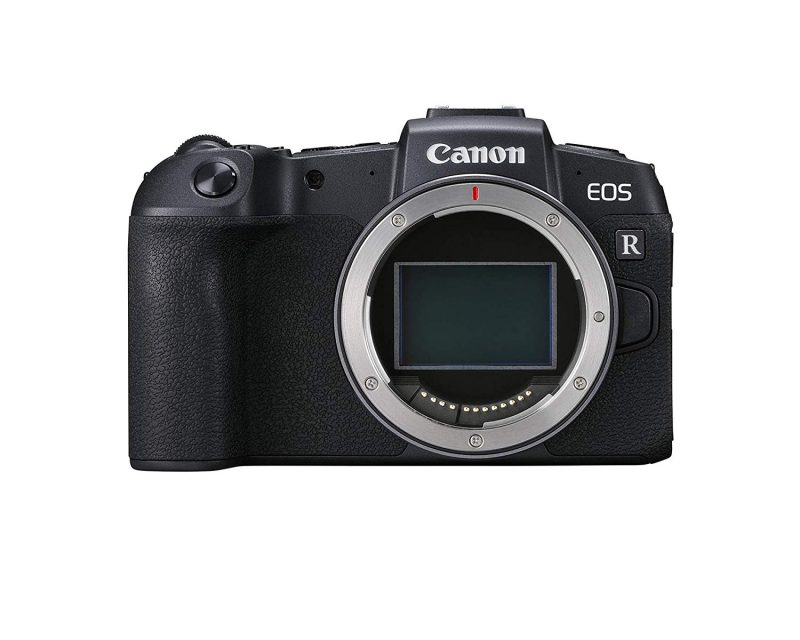
- What I like: One of the cheapest full frame cameras available.
- What I dislike: It’s tiny size and boiled down features could be a deal breaker for pros.
You don’t have to be rich to capture your trips. The Canon EOS RP is a killer, affordable full-frame mirrorless camera made for photographers who are on a budget. It’s smaller and lighter than the EOS R, making it more travel-friendly. One drawback is that you do get slightly lower resolution, but with 26.2 megapixels you still enjoy high-quality pics, especially for social sharing.
Let’s take a look at some of the features Canon packs into this firecracker:
- Fully articulating flip screen
- 4K video at up to 24 fps (with a crop)
- 5 fps burst-shooting
- Dual Pixel autofocus
- Eye autofocus that works in both One-shot and Servo AF modes
The EOS RP comes equipped with a DIGIC 8 processor, so it’s infused with an ISO speed of 40,000. It can be bumped up to 102,400 if needed. So no worries, it will be sensitive enough to light without slowing down the shutter speed or opening your aperture.

Battery life won’t be an issue, as you’ll get about 250 shots when fully charged. Its LP-E17 battery is plenty capable of getting you through the day. It also boasts a USB port for charging and comes with a standard charger.
The EOS RP has a great autofocus system that won’t give you any troubles in low light. Plus with eye-tracking autofocus, your portraits will be incredibly sharp.
The most mediocre aspect is its lack of sensor stabilization. Although, it does have a digital image stabilization option that reduces shaking for video.
All-in-all, this little piece of technology is capable of delivering amazing pics and footage without breaking your pockets.
Watch Video Review of the Canon EOS RP by Jared Polin
- FULL-FRAME CMOS SENSOR & DIGIC 8 30.3 MP IMAGE PROCESSOR: Ensures crisp photos and high-resolution videos; enables optimum performance, image processing, and video functionality
10. Canon EOS R7
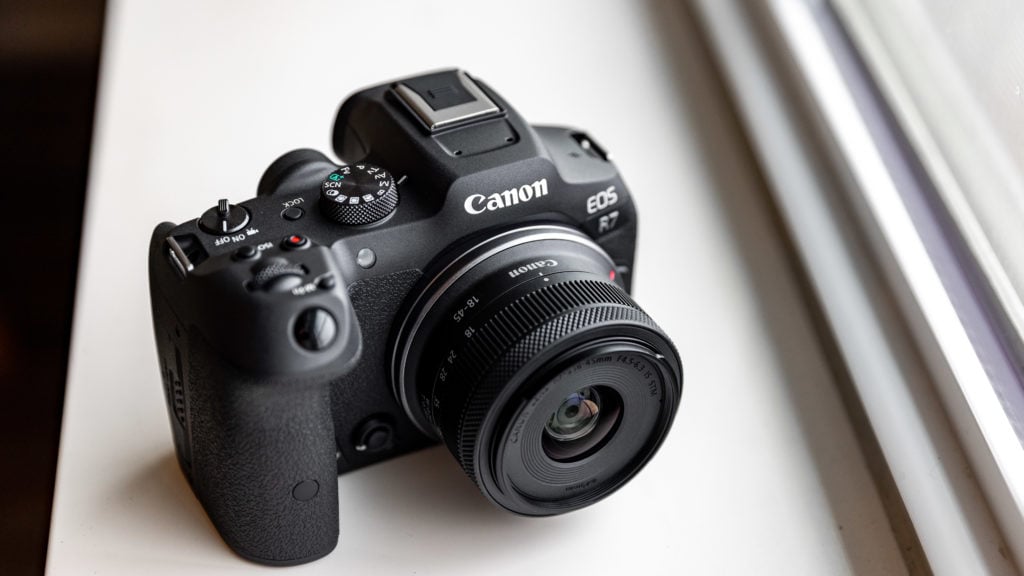
- What I like: Great form factor with high-end features.
- What I dislike: Not a full frame camera.
One of the latest Canon mirrorless cameras is the Canon EOS R7. This compact camera with cropped sensor packs quite the punch. Featuring a 32.5MP sensor and DIGIC X processor the R7 has incredibly fast autofocus combined with high-speed 30 fps shooting. It’s not lacking in video features either, you can shoot 4K 60 fps video and even 4k 30fps using an oversampled from the entire 7k sensor meaning video quality will be tack sharp. For video shooting modes the R7 also allows you to use C-Log 3 for even more dynamic range and editing flexibility.
Best all the R7 is compatible with all RF lenses, new RF-S lenses, and of course EF lenses with the use of the EF to RF adapter. If you end up picking up an R7 you can also read my guide to the best SD cards for the Canon R7.
Watch Canon EOS R7 Hands on Video by Gordon Laing
11. Canon M50 Mark II

- What I like: Tiny, affordable, flip screen.
- What I dislike: Not full frame and cropped 4K video.
The Canon M50 Mark II is every entry-level photographer’s dream come true. It’s reasonably priced, easy to use, and produces professional-caliber photographs. So if you need a camera better than your smartphone it’s the perfect low budget, high-quality mirrorless option.
It has lots of impressive features that make it “the sweet spot” between affordability and excellent performance:
- 24MP APS-C sensor
- EF-M lens mount compatible with EF/EF-S lenses
- Dual Pixel autofocus with Eye AF
- 7.4 fps burst in AF-C (10 fps in AF-S)
- 4K video at 24fps (with a 1.7x crop)
- 1080/60p and 720/120p HD video
- 235 shot-per-charge battery life
One of the best things about the Canon M50 Mark II is its stellar sensor. It’s comparable to the Canon 80D in performance which is a good thing. However, keep in mind it’s smaller actually the lightest camera Canon has produced which makes it beautifully portable.
The M50 Mark II comes packing a Digic 8 Processor, giving you the power to capture smaller C-Raw files. It also wields the exceptionally dual pixel autofocus system that has eye AF also so portraits will be tack sharp.
Another addition you might love is the new silent shooting scene mode. Hey, it worked for Charlie Chaplin! Time to bring it back with class, style, and creativity.
Some of the cons? It doesn’t include sensor stabilization but does have the upgrades to deliver steady still images and videos. Also, its 4k video shooting is cropped, making it a tad bit harder to use for 4k vlogging. And lastly, if you’re big on battery life you might be a hair less than impressed with the M50’s 235 shot-per-charge battery. Altho sufficient, it falls just a little under the mark when compared to cameras with longer battery life.
Altogether, you get a lot for your money and will have all you need to capture your travels in exceptional quality. If you’re trying to spend less than 1k on your camera, it’s a choice you can feel good about. If you want more info, click the link below and see a video review. It will shed a little more light on this model and make it easier to decide!
- 24.1 megapixel (aps-c) cmos sensor with iso 100-25600 (h: 51200).
12. Nikon Z6 Mark II
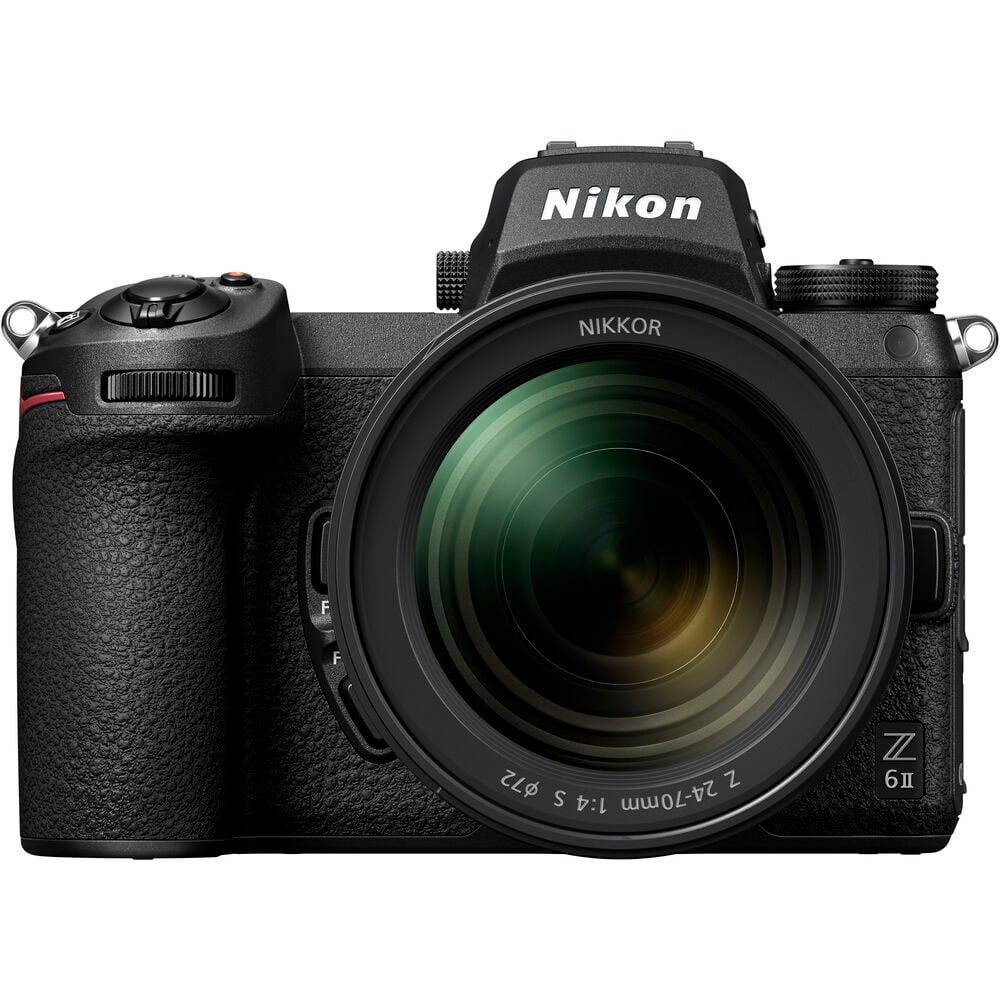
- What I like: Great price for a high quality sensor.
- What I dislike: Limited lens selection.
Think of the Nikon Z6 Mark II as the bada$$ little brother of the Nikon Z7. Highly praised in reviews, it’s created rugged and imbedded with Nikon’s exceptional optic technology —so yes it produces high-quality pics and videos.
Photographers are buzzing about its solid image stabilization, and jack-rabbit fast autofocus. For such a well-rounded camera, it’s managed to edge out the competition in key areas. Its 60p EVF display rate and 3.6 million dot Quad-VGA electronic viewfinder surpass the specs of the Sony A7 III. The Z6 Mark II also features two card slots; the initial slot can accommodate CFexpress and XQD memory cards, and the second slot can accommodate SD memory cards compatible with both UHS-I and UHS-II.
The Nikon Z6 II brings a bunch of desirable features to the table:
- 24.5MP BSI-CMOS sensor
- 14 fps burst shooting
- 3.69M-dot OLED viewfinder
- 5 axis sensor stabilization
- OLED display
- Dual card slots
- 4K 30fps video capture
- 100Mbps H.264 8-bit internal video capture
- 10-bit 4:2:2 N-Log output over HDMI
With an innovative design that shortens flange distance, its lens performance is impressive. It maximizes the full-frame sensor, allowing light to burst into every crevasse. This means greater clarity and more brightness across the frame.
Of course, the Nikon Z6 Mark II has fewer megapixels and lower resolution than its sibling Z7. But it’s still awesome, and a perfect choice if you’re looking to upgrade from a crop sensor camera. It’s a fair-priced, high caliber mirrorless frame that will give you the results you want.
The Z6 II also has a new lens mount but no worries, you can use your old Nikon lenses via the F to Z mount adapter. The Z6 II also boasts a 3.2 inch tilt-angle touchscreen. There’s also a Z6 II compact top-plate LCD that displays crucial camera information.
Its electronic vibration reduction system (E-VR) reduces the impact of camera shake when filming. You can shoot 4K UHD video up to 60p, or full HD video in 60p or 120p. Plus you get a battery life of around 340 shots for all-day traveling while taking pictures. There’s no doubt this mirrorless camera comes highly recommended.
Watch Video Review of the Nikon Z6 II by DPReview
- Mirrorless versatility on a whole new level. 24.5MP BSI resolution that excels in low light. 14 FPS suitable for fast action. 4K UHD Video performance at its best.
13. Sony a6500

- What I like: High quality photo camera plus 4K video shooting.
- What I dislike: High price and short battery life.
The Sony a6500 is an exciting step up from the a6000, and a different animal altogether. The 5-axis in-body sensor stabilization is its most coveted upgrade. Coupled with an expanded buffer and improved image quality this camera will improve your shooting ability all-round. It’s great for shooting at high speeds.
It has some remarkable features and specs that will take your pics and videos to the next level:
- 24MP APS-C CMOS sensor loaded with 425 points of phase detection
- 2.36M-dot OLED electronic viewfinder
- Tilting touchscreen
- 5-axis in-body sensor stabilization
- Double layered dust and moisture resistance
- 11 fps continuous shooting for up to 300 JPEGs / 100 Raws
- Internal UHD 4K Video plus S-Log3 recording
- 11 fps shooting
Let’s focus on the in-body image stabilization for a minute. The A6500 is the first APS-C Sony camera with this feature. It has a gyro sensor that stands up strong to 5 variants of camera shakes. You can use the shutter release to monitor the image stabilization via the viewfinder. This means more accurate framing and crisper focus for your videos and stills.
The frame is designed to be durable, and the components dependable. The braking mechanisms and elastic material Sony added to this model reduce vibration during shutter release. The shutter mechanism undergoes a rigorous test, where the release cycle is utilized 200,000 times without fail.
Its stellar new viewfinder and rear LCD monitor also set it apart from a6000. Packing a XGA OLED Tru-Finder you get better reproduction of darkness, color and pinpoint details. The touchscreen functionality has also been upgraded, making it a bit more fun to work with. And if you’re a vlogger or looking to make travel videos, you still get 4k video shooting in super 35mm format.
As far as autofocus, you’re working with a 1200-zone evaluative metering system with -2 to 20 sensitivity. Plus, there are two new metering modes that better handle brightness and overall smoothness of pics. Overall, this camera is a little pricier —but you will literally see and experience where the extra bit of money went.
Watch Video Review of the Sony a6500
- 24.2MP APS-C Exmor sensor w/ advanced processing up to ISO 51.200
14. Fujifilm X-T4
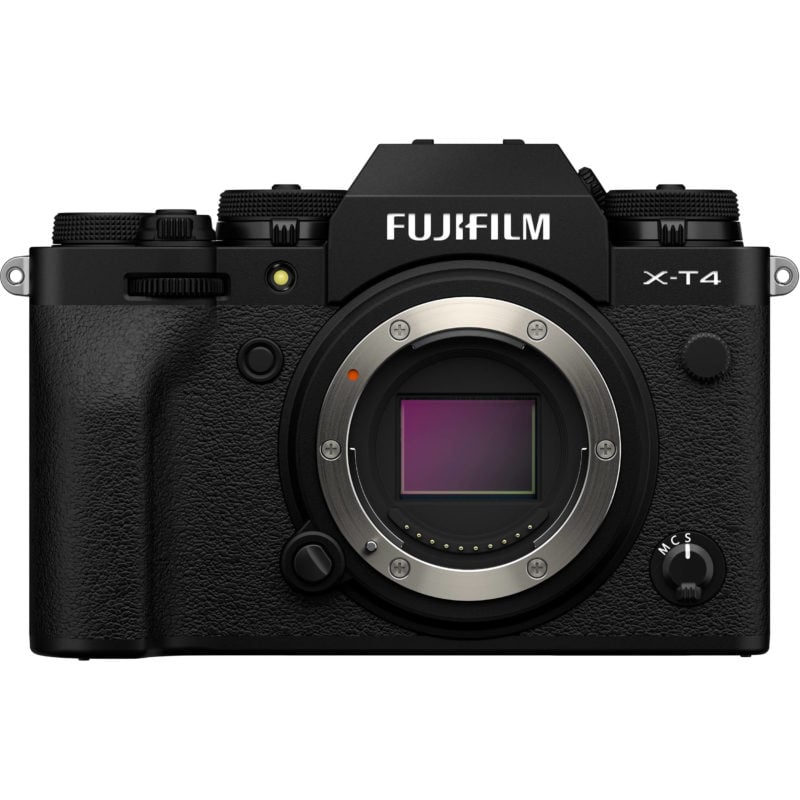
Fuji has always been known for their vintage style and high quality images an the Fujifilm X-T4 is no exception. With in-body sensor stabilization, fast shooting modes, great autofocus, and extended battery life it improves in most aspect over the X-T3.
Some of the standout features on the X-T4:
- In-body image stabilization with up to 6.5 stop compensation
- 20 fps shooting for fast action shooting
- 4K video at 60fps for travel films
- 1080p video up to 240fps for slow-mo
- Weather-sealed body
If you’re into making travel videos, then great the Fuji X-T4 delivers 4K video at 60fps for butter-smooth footage.
The X-T4 uses phase-detection autofocus which works well for most use cases but has its downsides. It’s an improvement over the X-T3 for subject tracking but autofocus for photos and videos aren’t as great as competitors like Canon with their dual pixel autofocus system.
Additionally if you shoot a lot of face paced action in your travels the ability to shoot 20 photos per second will be a welcomed feature. In addition to all the high end photo features you’ll also have a large lens selection to shop from.
- Putting stability in your hands: A huge part of creating great photos or videos is making sure you are in the right place at the right time – and that often means making handheld images to get to the heart of the action. X-T4’s state-of-the-art, five-axis In-Body Image Stabilization (IBIS) provides up to 6.5 stops of image stabilization to make sure that, even in the midst of all the excitement, your images remain steady and sharp. Combine this with the new four-axis digital image stabilizer, and you have lots of room to maneuver.
15. Fujifilm X100V
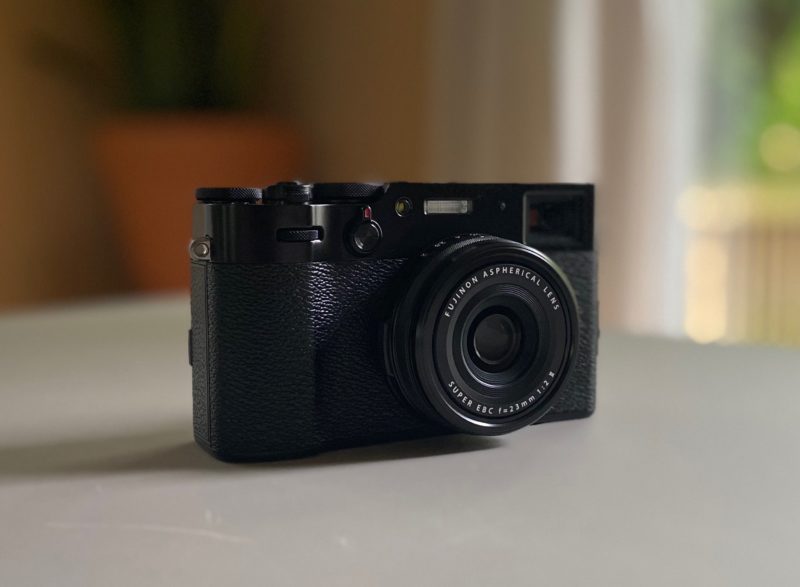
The Fuji X100V is a portable camera that shoots 26-megapixel stills with a non-interchangeable lens. Vintage lovers will be hooked on the X100V’s unique body. One big downside is that you can’t remove the lens but the 23mm lens attached to the camera is slim enough to put the camera in your pocket.
While it lacks any stabilization the 23mm f/2 lens makes taking travel photos or street photos on the go extremely easy. Plus the tilting touchscreen on the back makes it easy to shoot at all angles.
The camera can even film 4k video at 30 fps or 1080p footage at 120fps. It can even record 10-bit video to an external recorder using the HDMI port.
- Great photography every day, everywhere: X100V features a newly designed, incorporated 23 millimeter F2 lens, ensuring you preserve those special moments at maximum resolution with minimal distortion. It also offers an improved close focusing performance compared to previous X100 models, and, for the first time in the X100 line, you can keep making images even in the toughest conditions when you attach the optional adapter ring with the weather-sealing protection lens (sold separately). This outstanding lens retains the same slim line design as other X100 models, so it retains compatibility with existing WCL and TCL lens attachments.
16. Panasonic Lumix DC-G9
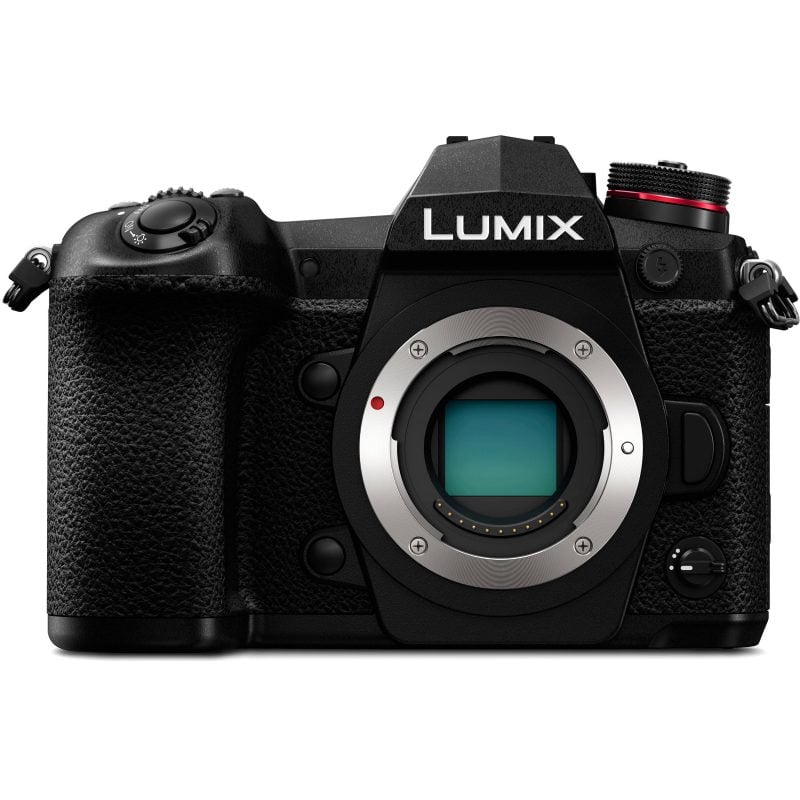
I call the Lumix DC-G9 “the sultan of stills.” While the Lumix DC-GH5 model is geared towards videos, this model is designed to give still life and landscape photographers something to get excited about. It’s cheetah-fast, with high resolution and great stabilization. It boasts the highest CIPA-rated level of stabilization (-6.5 stops) of any camera.
And no worries, vloggers. While taking high-quality pics is this camera’s forte’, it still does the job when it comes to shooting videos.
Let’s take a look at what this crafty piece of technology has to offer:
- 20.3MP Micro 4/3 sensor
- 3.68M-dot electronic viewfinder
- Articulating touchscreen display
- 5-axis in-body image stabilization
- 4K at 60p UHD video capture
- Magnesium body that’s weather-sealed and dust-protected
- variety of 4K and 6K Photo modes pls in-camera focus stacking
- USB charge and power capability
The Lumix DC-G9 comes with one of the largest viewfinders on any macro four-thirds camera. And yes, its micro four-thirds image sensor might be a tad small, but it gives you a huge lens selection because so many companies make lenses for it.
With continuous autofocus for about 50 frames using the electronic shutter, it’s safe to say —it’s fast. Also, it can shoot at 9 fps with autofocus-C for over 600 frames using the shutter. Not too shabby.
And as mentioned, it’s quite serviceable when it comes to creating travel videos. Like the GH5, it can shoot 4K/60p videos. It comes with headphones and microphone jacks, so your audio and recording needs are adequately covered. However, it’s missing some the more high-end options and extended video tool set the GH5 offers. Overall, it’s a great little camera waiting to capture the world.
- Professional photo and video performance 20 3-Megapixel (Plus 80-megapixel high-resolution Jpeg or raw in-camera image) micro Four Thirds sensor with no low pass filter to confidently capture sharp images with a high Dynamic Range and artifact-free performance
17. Olympus OM-D E-M10 Mark III
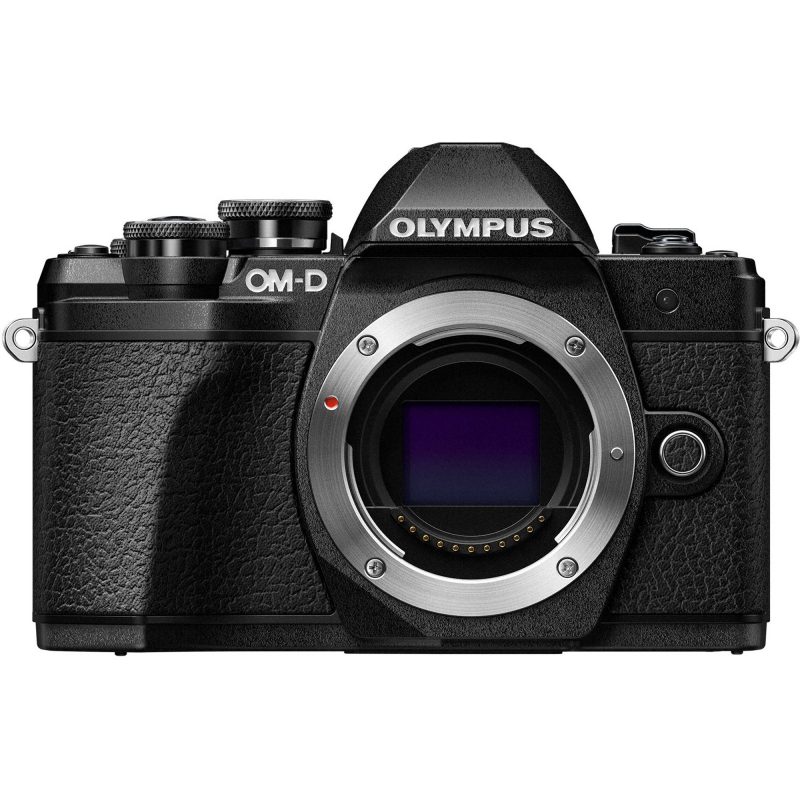
The Olympus OM-D E-M10 Mark III is proof that you can buy a mid-level, high quality camera at a lower price. Given how awesome it is, photographers are stunned by its $650 price tag.
It comes packing a more powerful processor than its predecessor, plus various upgrades that make its specialized modes easier to master.
So yes, it’s the perfect micro four thirds mirrorless camera for serious novice travel photographers:
- 16 megapixels
- 5-axis image stabilization
- 4K video with in-body/digital stabilization
- 8.6 fps continuous shooting and 4.8 fps with continuous autofocus
- 2.36M-dot electronic viewfinder
- Tilting touchscreen
- 330 shot-per-charge battery life
This model is earning a reputation as one of the top travel cameras on the market, and comes with an electronic viewfinder and DSLR styling —unlike the PEN E-PL7 and E-PL8 models. Altho it boasts a modest 16 megapixels, its higher quality image processor is infused with 121 autofocus points for fantastic shots.
It also comes with 4K video and a bleach bypass art filter. And unlike some of the other small cameras on the market, it’s infused with a remarkable 5 axis in-body stabilization system to help deliver crisp pictures and smooth video footage.
One sweet addition is the shortcut button located on the the camera’s top plate. On this model, it’s a dedicated control that takes you straight to either the settings control panel or menu. There’s also individual options for movie, SCN and AP modes.
And keep in mind, Olympus cameras like the OM-D E-M10 Mark III are ideal for taking travel pics because their lenses are smaller. That doesn’t mean they’re not powerful. It just means they’re easy to carry.
One knock on it, is the slightly inflexible auto ISO implementation. But it still maintains a decent shutter speed. Altogether, this lightweight camera is perfect for travels, and vlogging while on vacation. It has what you need to take epic stills and record stellar videos.
18. Olympus OM-D E-M1 Mark III
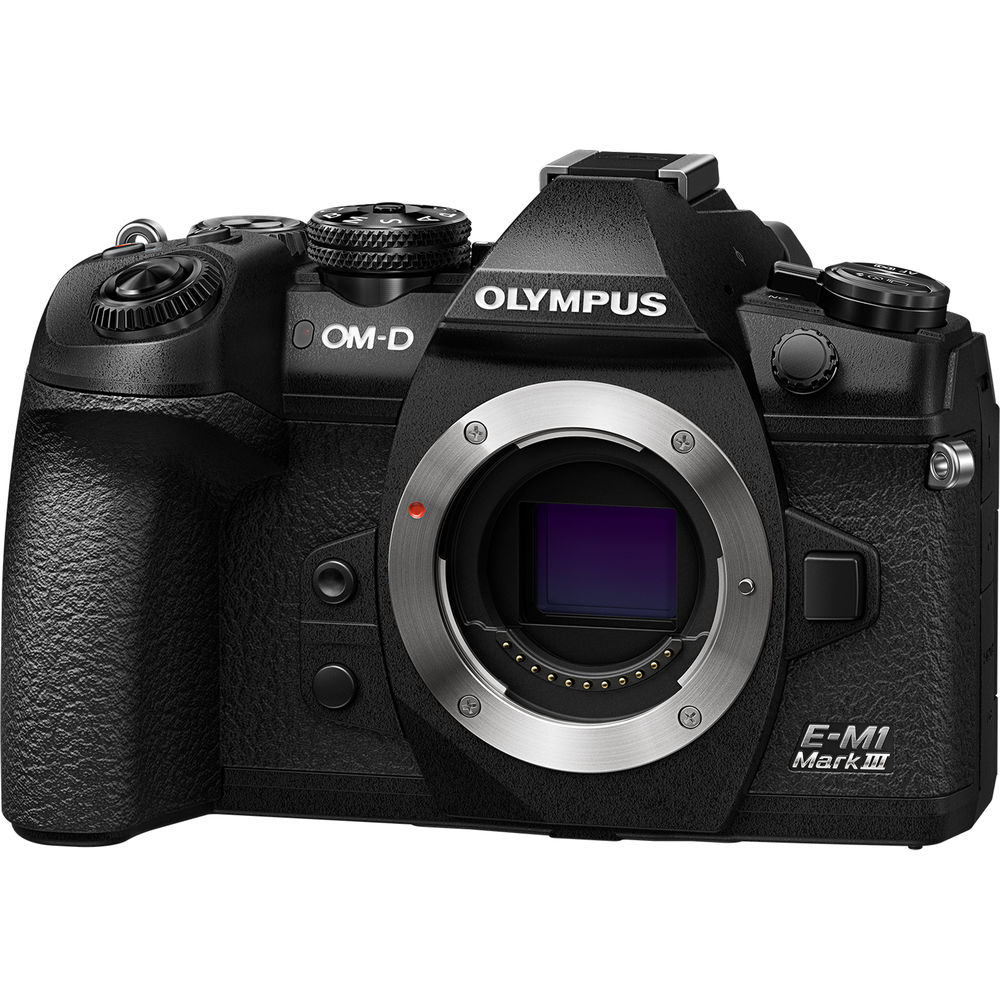
The Olympus OM-D E-M1 Mark III, the budget-friendly choice in the E-M1 series, is a gem that is not to be overlooked, despite its more advanced predecessor, the OM-D E-M1 Mark II. Ideal for professional photographers seeking a robust travel camera that doesn’t break the bank, this camera has everything you need.
Equipped with a Micro Four Thirds sensor and an array of advanced features, the E-M1 Mark III offers excellent value:
- 20.4MP Live MOS Micro Four Thirds Sensor
- Lightweight and compact Micro Four Thirds system
- 2.36m-Dot 0.74x Electronic Viewfinder
- 3.0″ 1.037m-Dot Vari-Angle Touchscreen
- DCI 4K/24p & UHD 4K/30p Video Recording, a substantial upgrade from 1080P/30
- Audio capabilities: a headphone jack, USB 3, and headphones
- 5-Axis Sensor-Shift Image Stabilization
As you hold the E-M1 Mark III, the first thing that catches your eye is its stylish design and high-quality build. With a weather-sealed body and intuitive controls, this model is perfect for both photographers and videographers on the move. Its compact frame belies a tough, robust construction – capable of delivering breathtaking shots in all weather conditions, whether rain, wind, sleet or snow.
The E-M1 Mark III’s exterior resembles that of the OM-D E-M1, yet within, its mechanics are refreshed and advanced. A TruePic IX image processor bolsters its processing power, and the continuous shooting speed surges to an impressive 15 frames per second. The camera also features rapid 20 fps burst shooting.
As a Micro Four Thirds camera designed for travel photography, the E-M1 Mark III outshines its competitors. It manages a commendable 15 fps with continuous autofocus and auto exposure between frames. Further, it sports an enhanced 121 all cross-type phase-detect autofocus points, a substantial improvement over its predecessor.
A potential downside could be that in high-ISO shooting, the Micro Four Thirds sensor might encounter some noise. The anti-aliasing filter could also result in moiré. However, its powerful 5-Axis Sensor-Shift Image Stabilization allows for lower ISO by permitting slower shutter speeds, thus reducing noise. Additionally, moiré can be avoided by employing the camera’s high-resolution shot mode.
The E-M1 Mark III is the first Olympus camera to boast DCI 4K/24p & UHD 4K/30p video recording, covering both Ultra HD 3,840 x 2,160 and DCI 4,096 by 2,160 resolutions. Coupled with the new BLH-1 lithium-ion battery pack, it offers 37% more capacity with a CIPA rating of 440 shots per charge, promising extended shooting sessions of incredible travel stills and video footage.
Speed, versatility, and portability are the hallmarks of the Olympus OM-D E-M1 Mark III, making it a fantastic Micro Four Thirds mirrorless camera for a wide range of stills and video needs.
- Multi-selector (Joystick) for quick selection of the AF area while looking through viewfinder
19. Panasonic Lumix GH6 – Great Mirrorless for Vloggers
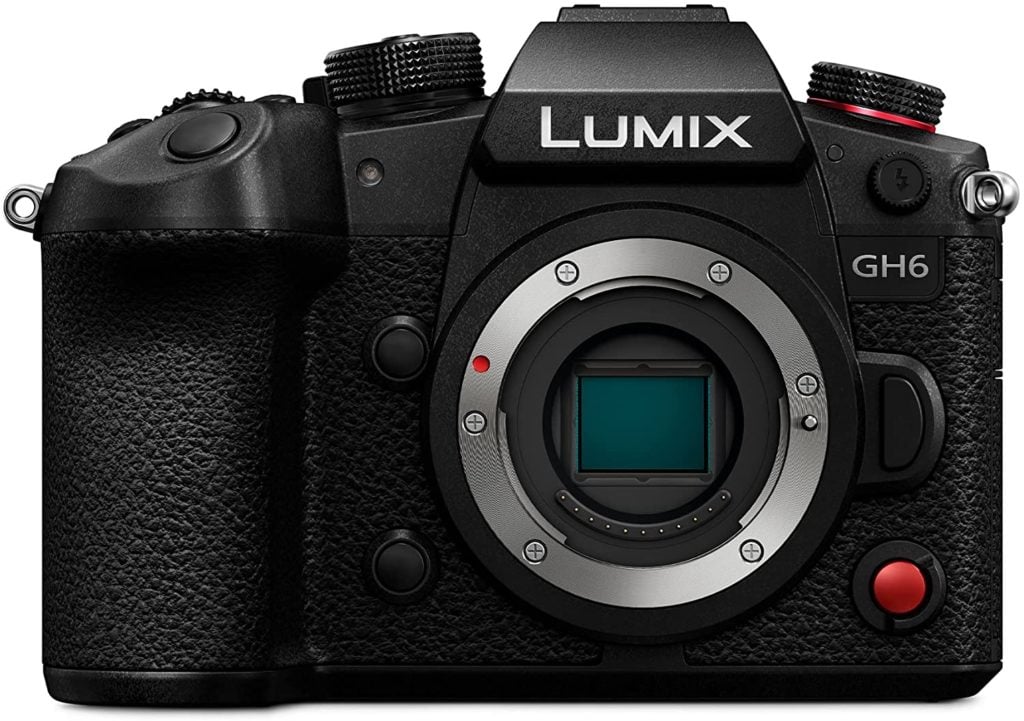
Panasonic has improved on the widely popular GH5 with the GH6. With powerful video features like 4k 120fps 10-bit recording with no time limit you’ll be able to take videos like never before. Plus it’s 25 megapixel sensor gives you the ability to film at 5.7k 60fps for even more detail. This camera gives you the best of both world, great stills and great video. Making it a great mirrorless camera for all of your travels.
The Lumix GH6 features the highest megapixel micro 4/3 sensor on the market. While the camera has great video features it still is a power house for stills. With improved dynamic range, in-body image stabilization, fast autofocus, and a high-resolution shooting mode there is plenty here for micro 4/3 photographers.
Panasonic GH6 Key Features:
- 25.2MP Micro 4/3 Sensor
- ISO Range: 100-25600 (native)
- 7.5-stop 5-axis image stabilization system
- 100MP Handheld High-Resolution Shooting mode
- Up to 75fps continuous burst shooting
- 5.7K 60p, 4K 120p HFR, FHD 300p VFR
- Apple ProRes 422 internal recording
- 13+ stops of dynamic range in video
- Unlimited video recording time in all resolutions and frame rates
- Built-in active cooling fan
- Weather-sealed
- 3680k-dot OLED EVF
- Tilt and vari-angle touchscreen with 1840k-dot LCD
- Dual card slots (CFExpress Type B, UHS-II SD)
The flip screen makes it great for vlogging since you can see yourself while filming. The GH6 also features active cooling so you can film in any mode for unlimited time.
The previous version; the Panasonic GH5 is still also a great option for video shooters.
Watch a Video Review of the Panasonic GH6
- Higher Resolution and Bit Rates than Ever Before: 25MP Sensor and Venus Engine with 100MP Hand-Held High Resolution Shot; 5.7K 60p, 4K 120p 10-bit video and all recording modes are no time limit
These mirrorless cameras are sure to improve your travel photography. Whether you’re looking to become Instagram famous or document your travels by capturing jaw-dropping images any of these digital cameras are a great choice.
Looking to improve your travel photos?
Read: Travel Photography Tips to Improve Your Photos
Pick the camera best for you today, and show the world your talent and unique perspective.

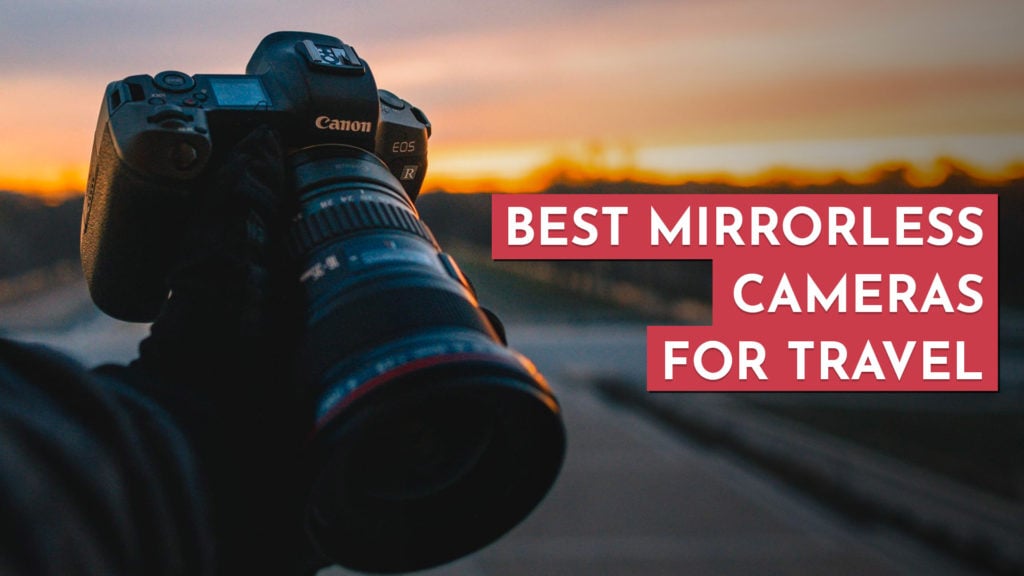














![OM-D E-M10 Mark III with 14-42mm EZ [Silver]](https://m.media-amazon.com/images/I/51K+Qvi4D6L._SL160_.jpg)


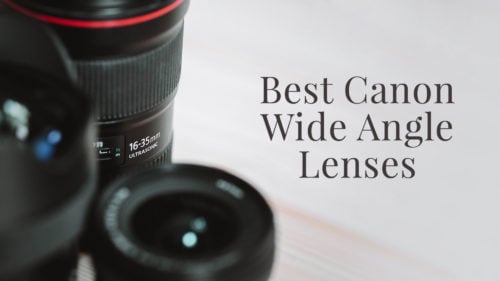

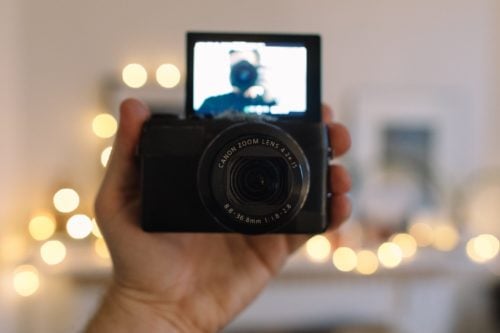
very good topic and well explained but I still don’t know why Nikon and Canon overprice their mirrorless camera
PS There are no downsides to the A7RIII